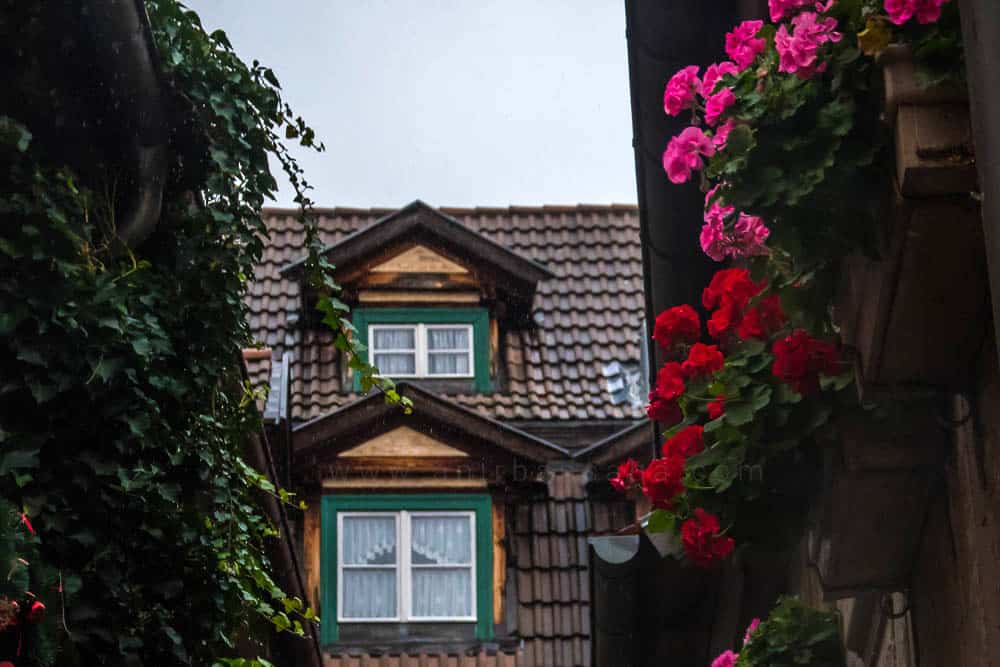Read this post in Telugu | Bangla .
Quedlinburg is about an hour away from Magdeburg and is over a thousand years old – reasons enough for me to say a yes when my friends asked me to join the “IKUS* excursion”!
We braved the rain and the chill of the wind; met others nearby and walked to the station (read: Hauptbahnhof) to find the IKUS coordinators very patiently waiting, to tick our names on the list and hand over a map and the schedule, in case we get lost. For many of us, this was our first break from studies; chit-chats and a series of selfies later, we boarded the train and reached Quedlinburg, where we were greeted by an extremely sweet lady who took us through the lanes.

First sight – Quedlinburg.
.

From the Quedlinburg castle | www.anirbansaha.com
Quedlinburg is a UNESCO World Heritage City; 80 hectares of world heritage, over 2000 timber-framed houses built over the centuries, cobbled streets and during this time, people are preparing for Christmas fair! This city is a continuously living history for over a thousand years, not invaded, did not catch fire, did not get destroyed by anything or anybody under any circumstances. Standing alone on one of the streets, I could feel how medieval Europe was like.
Quedlinburg: 4 buildings made in four different centuries.
This city was built during the 9th century. To give you a perspective: in India the city of Pataliputra was losing its significance, the Palas of Bengal, the Rashtrakutas of western India and the Gurjaras of central India were fighting over Kannauj, and no one cared about the Tomar clan ruled Dhillika (Dilli / Delhi). Umm, that’s the time-frame, Quedlinburg was built in Germany and it continues to remain today, probably, exactly the same.
Trivia: Of the Gurjaras, what remains in India is another UNESCO World Heritage Site – the Khajuraho temples.
Narrow lanes and hanging flowers | traditionally Europe, they say.
What interested me in Quedlinburg is that the people are holding to their heritage and building newer homes which are larger mansions with Timber frames. That’s very very interesting.
Narrow lanes and BIG cars!
.
Cobbled Streets and the wet streets.
.
Quedlinburg: Broad streets and market space.
.
Inside the church | Subscribe to my blog here.
.
Narrower cobbled streets that remind me of Calcutta.
Talking about other buildings, they’re Gothic with their pointed arches trying to touch the heavens. Sabine, our guide, told me that Gothic dates between the Romanesque and the Renaissance architecture, both of which are prominent in Quedlinburg; we didn’t see because it was raining heavily.
Emblem on the Coat of Arms
.
The Town hall gate after sunset.
Talking about the times, a lot could be written about Quedlinburg being one of the most important palatinates and reverently referred to as the cradle of Germany. Wonder why? Because this was the favourite palatinate (place) of Heinrich I, who founded the Ottonian empire. He consolidated Germany and put his son Otto I to power.
Quick history: Otto I or Otto the Great, is a Holy Roman emperor, consolidated Germany further, invaded Italy and all that is complex. He is buried in Magdeburg, the city I live in now.
Quedlinburg also saw some strong women leaders at a time, it was unheard of. They ruled the country when they were required to. Heinrich I’s widow Mathilde ruled for 30 years; her grand-daughter by the same name ruled for 33 years. The men of the family either fought wars or pacified rebellions and the women ruled the empire. It pretty much went on like this for around 900 years. Young girls attended schools and were educated in boarding schools away from the “men’s world” to prepare for their future lives. The other men did not like it and often wanted to overthrow the women’s rule.
If you visit Quedlinburg, you’d fall in love with the small city with cobbled streets, bordered by the river, with a castle on it’s top from where you could oversee the entire city. There’s a Town hall and many small churches which you might want to explore. I plan to visit this place during the summer.
“Pay if you want to photograph me.”
.
The castle in Quedlinburg. And you can see water on the lens.
.
Evenings and the streets. | Follow me on Instagram by clicking here.
We walked the streets in the rain, getting drenched and shivering in cold. The castle has a few really good restaurants, which are expensive, but the Gluhwein (warm wine) is worth the price. We aimlessly strolled the lanes of the city during the second half of the day, came across a ]church where a group of musicians were rehearsing for an event.
—-
Do ask me questions; and if you like this blog post, I request you to share this with your friends. To get more blog posts on Facebook, please subscribe to my Messenger list by click here.
Sabine who was guiding us and Madhu, my roommate, who has very kindly agreed to translate this post in the Telugu language.
Thank you, Sabine Housen, for writing me a long email with all the related information. She loves this city and acts as a guide. She contributed to an essay book on Quedlinburg, published and distributed internationally.
* What’s IKUS? That’s Interkulturelle Studenten. It’s the student body in the university which does a lot of events to help students settle down in Germany, explore the culture, help them prepare for employment and in any way possible.
Read Madhu’s post on Quedlinburg in Telugu.
